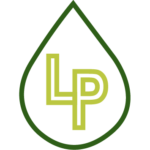- Turn Off the Water Supply: Locate and turn off the main water shut-off valve (stopcock) to stop water flow immediately. This valve is usually located near the water meter or where the main water line enters the house.
- Drain the System: Open all taps, both hot and cold, to drain the remaining water from the pipes and reduce pressure. This will help minimise further leakage.
- Turn Off the Electricity: If water is leaking near electrical outlets or appliances, turn off the electricity at the main switchboard to prevent electrical hazards.
- Contain the Leak: Use buckets, towels, and mops to contain and clean up the water. Place a bucket under the burst pipe if possible to catch dripping water.
- Locate the Burst Pipe: Identify the location of the burst pipe. This will help when describing the issue to a plumber.
- Contact a Professional Plumber: Call a reliable local plumber, such as Longbeach Plumbing based in Cheltenham, to assess the damage and perform the necessary repairs. Provide them with details about the burst pipe and any temporary measures you’ve taken.
- Document the Damage: Take photos and notes of the damage for insurance purposes. This documentation can be useful when lodging a claim.
- Clean Up: Start cleaning up any standing water to prevent mould and further damage. Use fans and dehumidifiers to dry out the affected area.
- Prevent Future Bursts: Consider insulating exposed pipes, especially in colder areas, to prevent freezing and bursting in the future. Regular maintenance and inspections can also help identify potential issues before they become major problems.
By following these steps, you can minimise damage and quickly restore your plumbing system to normal.

